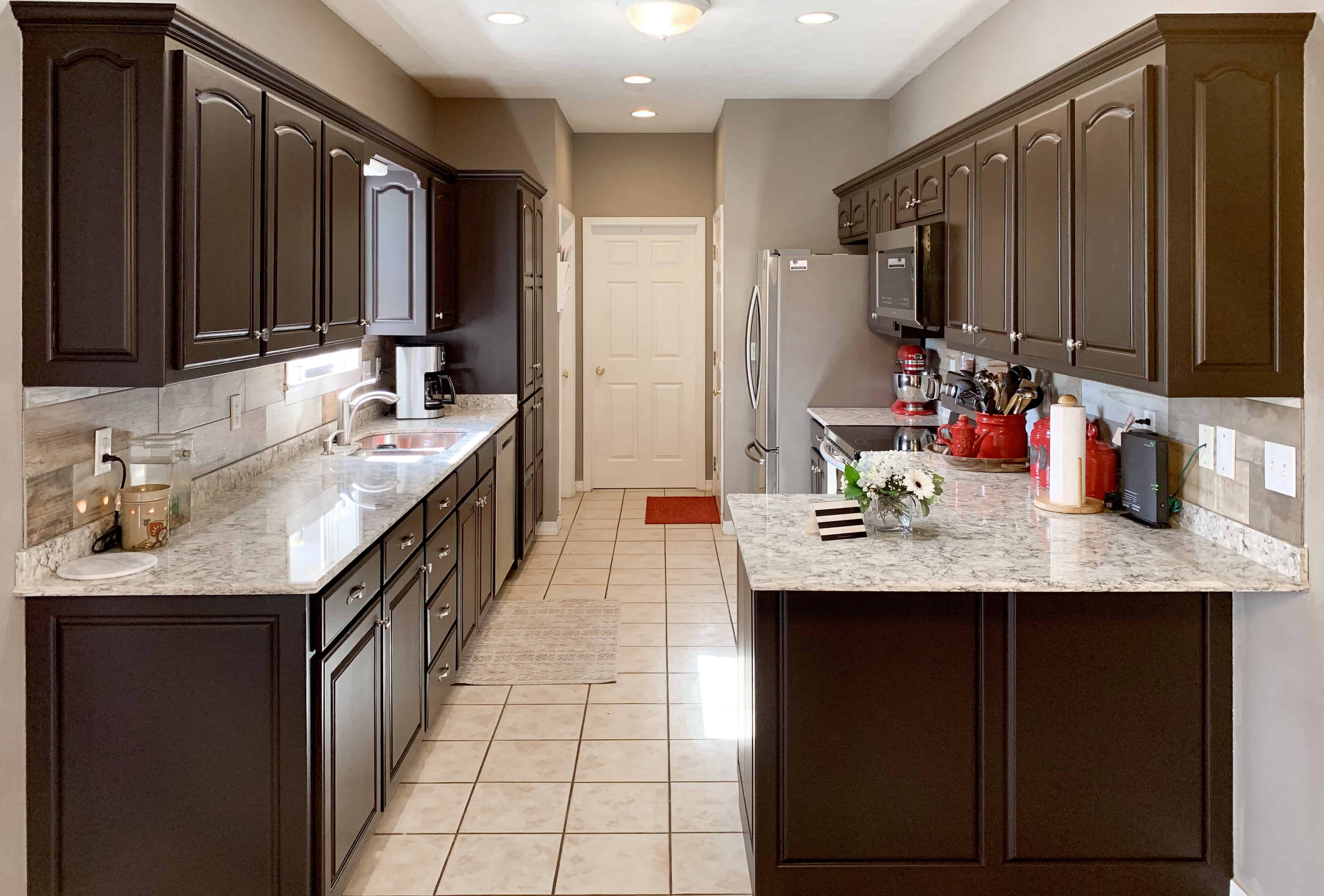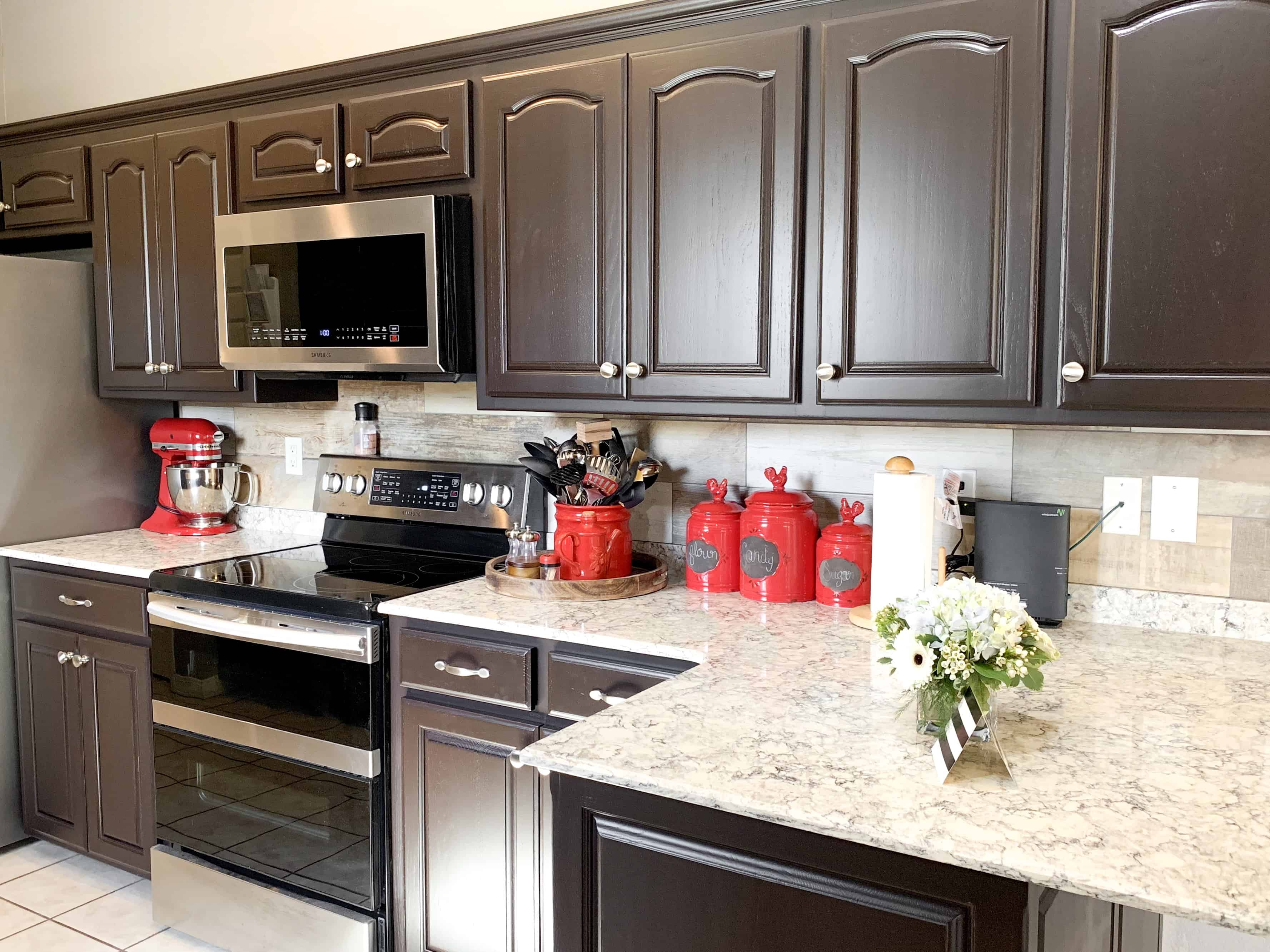Shades and Variations of Chocolate Brown Cabinet Paint

Choosing the perfect chocolate brown for your cabinets can dramatically impact your kitchen’s overall aesthetic. The subtle differences in undertones significantly affect the final look, ranging from warm and inviting to cool and sophisticated. Careful consideration of these variations is crucial for achieving the desired ambiance.
Chocolate Brown Shade Descriptions and Comparisons
Five distinct shades of chocolate brown, progressing from lighter to darker tones, are presented below. Each shade possesses unique undertone characteristics that profoundly influence its visual impact when applied to cabinetry. Understanding these nuances is paramount in selecting the most suitable color for your space.
| Shade Name | RGB Color Code Approximation | Undertones | Suggested Wood Grain Style Pairing |
|---|---|---|---|
| Milk Chocolate | #A0522D | Warm, with subtle reddish-orange undertones | Light oak, maple with minimal grain |
| Caramel Swirl | #8B4513 | Balanced, with hints of both red and yellow undertones creating a warm, inviting feel | Medium-toned cherry or walnut with a moderate grain |
| Dark Chocolate Truffle | #5C3317 | Deep, with prominent reddish-brown undertones; can appear almost burgundy in low light | Rich mahogany or dark walnut with pronounced grain |
| Espresso Bean | #362114 | Cool, with subtle gray undertones; offers a more modern, sophisticated feel | Dark stained woods like ebony or wenge, or even painted wood for a sleek look |
| Midnight Cocoa | #2B1E10 | Very dark, almost black, with cool gray undertones; creates a dramatic and luxurious effect | Very dark stained wood or even a black painted wood to accentuate the dark tones |
Choosing the Right Finish for Chocolate Brown Cabinet Paint

Selecting the appropriate finish for your chocolate brown cabinets is crucial; it significantly impacts both the aesthetic appeal and the practicality of your kitchen or bathroom. The sheen level you choose dramatically alters how light reflects off the surface, influencing the overall look and feel of the space. Understanding the nuances of each finish will ensure a result that perfectly complements your design vision and withstands daily use.
Matte Finish
Matte finishes offer a flat, non-reflective surface. This creates a sophisticated, understated look, ideal for a more traditional or minimalist design scheme. However, matte finishes are more prone to showing fingerprints and scratches, requiring more frequent cleaning. They are also more difficult to clean than glossier options.
- Pros: Subtle elegance, hides imperfections well.
- Cons: Shows fingerprints and scratches easily, requires more frequent cleaning.
- Appropriate Spaces: Traditional kitchens, farmhouse-style kitchens, spaces where a muted, sophisticated look is desired.
Satin Finish
Satin finishes provide a slightly more reflective surface than matte, offering a soft sheen. This balance between matte and gloss makes them a popular choice. They are relatively easy to clean and more durable than matte, resisting scratches and scuffs to a greater degree.
- Pros: Easy to clean, durable, subtle sheen.
- Cons: May still show some minor imperfections.
- Appropriate Spaces: Modern kitchens, transitional style kitchens, bathrooms, spaces needing a balance of style and practicality.
Semi-Gloss Finish
Semi-gloss finishes have a noticeable sheen, offering excellent durability and easy cleaning. They are highly resistant to moisture and scratches, making them a practical choice for high-traffic areas. The sheen adds a touch of elegance, brightening the space and making the chocolate brown color appear richer and deeper.
- Pros: Very durable, easy to clean, resists moisture, enhances color depth.
- Cons: Shows imperfections more readily than matte or satin.
- Appropriate Spaces: Busy kitchens, bathrooms, areas prone to moisture, spaces where durability is paramount.
High-Gloss Finish
High-gloss finishes offer the most reflective surface, creating a dramatic and luxurious look. They are extremely durable and easy to wipe clean, ideal for high-use areas. However, they show every imperfection, requiring meticulous preparation of the cabinets before painting.
- Pros: Extremely durable, easy to clean, creates a luxurious look.
- Cons: Shows every imperfection, requires careful surface preparation.
- Appropriate Spaces: Modern kitchens with a sleek design, contemporary bathrooms, spaces where a high-shine finish is desired.
Visual Representation of Sheen Levels
Imagine four squares representing your chocolate brown cabinets.
* Square 1 (Matte): The color appears relatively flat, with minimal reflection. It’s like looking at a piece of dark, velvety chocolate.
* Square 2 (Satin): A soft glow is visible, like the subtle sheen on a polished gemstone. The chocolate brown color appears slightly deeper and more luminous.
* Square 3 (Semi-Gloss): A noticeable shine is present; the chocolate brown reflects light more distinctly, appearing richer and more vibrant.
* Square 4 (High-Gloss): A mirror-like reflection is apparent. The chocolate brown color is intense and almost gleams. You can clearly see your reflection in the surface.
Painting Techniques and Preparation for Chocolate Brown Cabinets: Chocolate Brown Cabinet Paint

Transforming your kitchen cabinets with a rich chocolate brown hue requires meticulous preparation and the right painting technique. A rushed job will result in a less-than-professional finish, highlighting imperfections and ultimately detracting from the overall aesthetic. Take your time, follow these steps precisely, and you’ll achieve a stunning, long-lasting result.
Proper preparation is paramount for a flawless finish. Cutting corners here will show up later, no matter how skilled your painting technique. This isn’t just about aesthetics; it’s about the longevity of your paint job. A poorly prepped surface will lead to chipping, peeling, and an overall unsatisfactory outcome.
Cabinet Preparation
Thorough cleaning is the first step. Use a degreaser to remove any grease or grime, followed by a thorough rinse with clean water. Allow the cabinets to dry completely. Next, lightly sand the cabinet surfaces with fine-grit sandpaper (180-220 grit) to create a slightly rough surface for better paint adhesion. Pay close attention to any imperfections, sanding them smooth. Remove all sanding dust with a tack cloth or a slightly damp cloth. Finally, apply a high-quality primer specifically designed for cabinets. This will seal the wood, prevent bleed-through from stains or knots, and provide a smooth, even surface for the chocolate brown paint. Allow the primer to dry completely according to the manufacturer’s instructions.
Painting Techniques, Chocolate brown cabinet paint
Three effective painting techniques for achieving a professional finish on cabinets are brushing, rolling, and spraying. Each has its advantages and requires specific tools and materials.
Brushing offers excellent control and allows for easy application in tight corners and detailed areas. A high-quality angled brush with synthetic bristles is essential. Rolling provides a fast and efficient method for covering large, flat surfaces. Use a high-quality foam roller with a smooth nap. Spraying delivers a very smooth, even finish, ideal for a seamless look, but requires more setup and cleanup and proper ventilation. An HVLP (High Volume, Low Pressure) sprayer is recommended for this technique.
Brushing Technique: A Step-by-Step Guide
Proper brushing technique is crucial for a professional look. Avoid overloading the brush, use smooth, even strokes, and always maintain a wet edge to prevent lap marks.
- Pour a small amount of paint into a paint tray.
- Lightly load the brush, ensuring no excess paint drips.
- Apply the paint in long, smooth strokes, working in the direction of the wood grain.
- Maintain a wet edge to avoid lap marks and ensure even coverage.
- Allow the paint to dry completely before applying a second coat.
- For a truly professional finish, lightly sand between coats with very fine grit sandpaper (320 grit) to smooth out any imperfections before applying the final coat.
